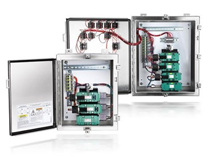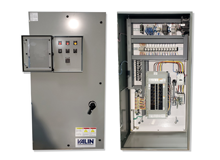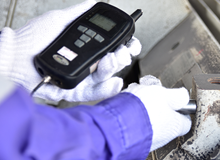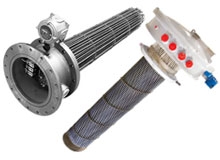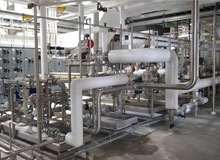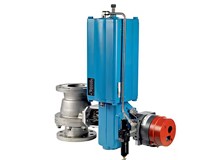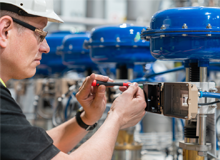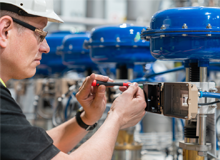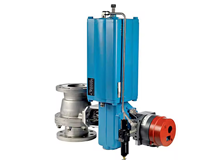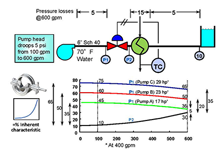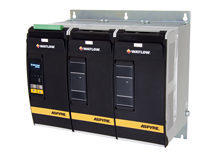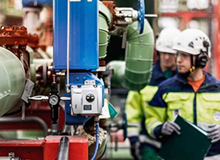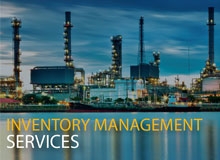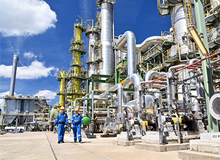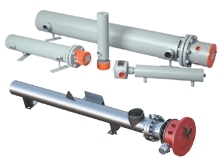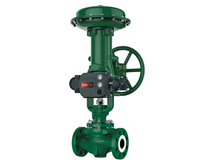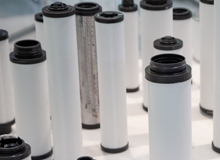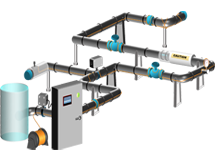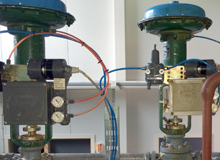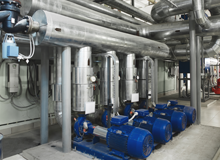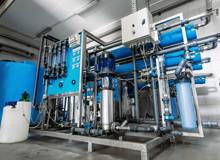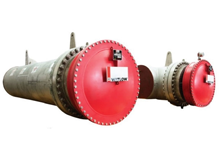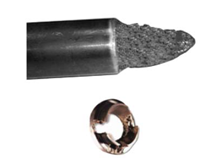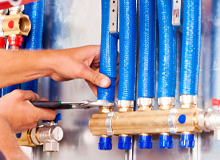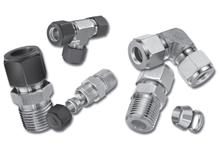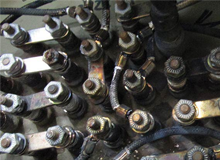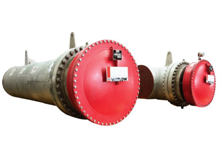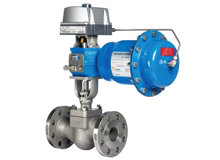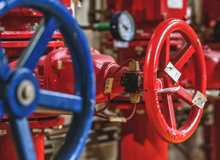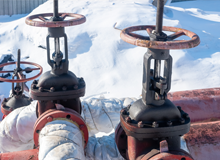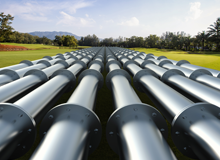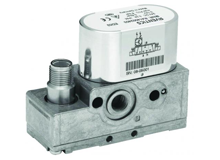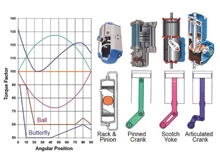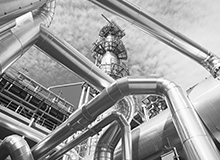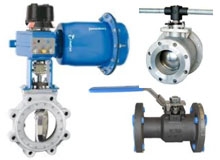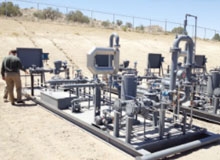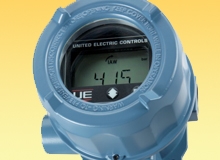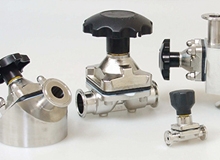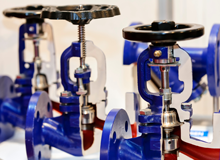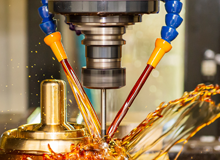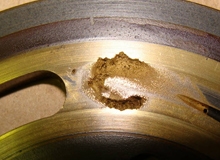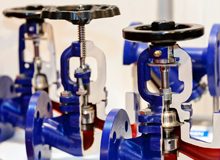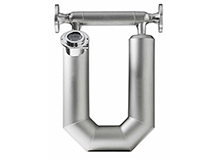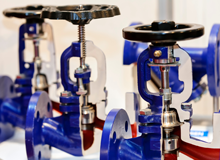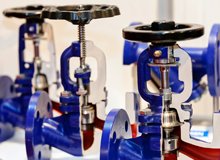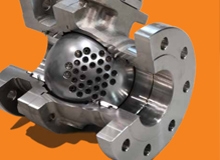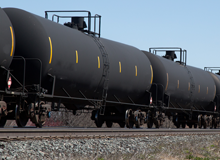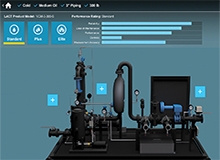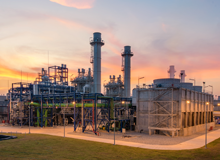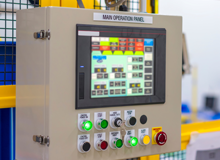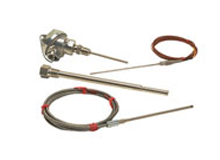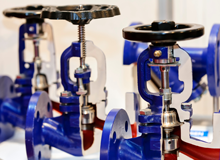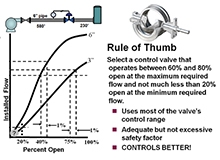Resources
Petroleum Refining
A large refinery in California (U.S.) was conducting a turnaround and utilized an outside engineering firm to oversee the process. During this phase, the engineering firm discovered the refinery needed new emergency safety shut-off valves (chopper valves) as part of their regeneration process.
The certification exists for a reason — to ensure that the control panels being built meet the very highest safety standards available.
The key to making the proper decisions on condition monitoring is to understand what kind of information is required, how often that information is needed and what kind of budget is in play.
Taking a systematic approach to specifying a tank heater can help ensure the equipment specified delivers the heating performance desired. Factors to consider include the amount of energy needed, heat loss, direct or indirect heating, materials of construction, and controls.
The concepts of “preventive maintenance” and “condition monitoring” are not always characterized in a way that is entirely accurate. They sometimes seem to be treated as a “one-size-fits-all” service that many operators believe they need. However, these concepts can mean very different things depending on the application.
Industrial process plants are complex facilities with thousands of components that play a role in the operation of the plant. Not all these components hold the same consequences if they are improperly selected or if they fail to perform their designed function.
Recently an article was published that presented an easily constructed Excel sheet that estimates hydrodynamic noise in control valves1. A number of people have asked me if there is something similar for aerodynamic noise.
A veteran of valve sizing with more than 40 years of experience provides his perspective on how to calculate the compressibility factor of a real gas for control valve sizing purposes.
Most control valve manufacturers include IEC 60534-8-4:2015 in their control valve sizing and selection software to predict control valve hydrodynamic noise. However, users who want to make quick noise predictions or who want to construct valve sizing applications, programming the above noise standard can be a daunting task.
If one wants to be able to do accurate hand calculations, or construct a simple program or Excel sheet, the method described here gives answers that agree exactly with iterative calculations using the equations in the current version of the ISA and IEC standards.
EIVs are a critical safety device for fuel-burning equipment and industrial processes that use flammable ingredients. Proper selection is critical for the safety of the workers in the plant, plant equipment and the surrounding communities.
The availability of an easily constructed Excel worksheet that calculates and graphs control valve installed gain in conjunction with the user’s preferred control valve sizing application has prompted a new interest in the application of these calculations. Three examples are shown here.
For any process where temperature needs to be monitored or controlled, a thermal loop is required. Typically, a process that contains a thermal loop includes some key elements: the process itself, the temperature sensor or transmitter, the temperature controller and the power controller.
Positioner selection deserves due diligence — and consideration of several factors before making any firm decision. There’s certainly not a typical one-size-fits-all approach for positioners; an uninformed choice can lead to undesirable consequences.
For a power plant to run as efficiently as possible, proper filtration is a critical part of the equation.
By taking advantage of Valin’s program, customers can be confident that their inventory management function is fully optimized. They can rest assured that the right parts will be in the right place right when they need them, while keeping the peace of mind that their transactional costs are being lowered and the KPI’s are being adequately analyzed.
The process industries have control valves with actuators designed to open, close and control them. Many people prefer pneumatic actuators given their long history, reliability and high performance.
In this article, featured in Process Heating Magazine, Ryan Kraus discusses the various criteria to consider when selecting a circulation heater.
A simple process method based on the principle that piping pressure losses are approximately proportional to flow squared is presented.
While globe control valves are still a viable solution, modern rotary control valves offer many advantages and serve as a more suitable solution in certain process applications.
As long as products have had ethernet ports, people have been asking for remote access to them. They believed they could just plug the devices into the internet, and it would all work. As more software tools became available and internet speeds increased, capable users found ways to give themselves access, however, there was a catch.
The only way to achieve a specified purity levels is to select and install proper filtration, with the job intended and the task fully understood. Norman Hall, Filtration Business Unit Manager for Valin Corporation, suggests a correct approach.
Most facilities in the chemical process industries (CPI) require some form of heat. The amount of heat required and the necessary level of consistency can vary from process to process. Regardless of the details, engineers must decide on a heating source that works best for a particular process.
In terms of what matters to most in the field today, it is safe to assume that reliability, flexibility, accuracy and cost are at the top of the list. With these factors in mind, implementing a silicon-controlled rectifier (SCR) control system for an electric heater is often an optimal approach.
Most people who are familiar with control valves have seen the formula for calculating the valve capacity (Cv) required to pass a given flow rate of water. This seems fairly straightforward until you ask yourself, what is the correct value of differential pressure to use?
There are several different processes that require a product to flow through a pipe from one piece of equipment to another. A certain level of heat is often required for this process piping, and this heat must be at very high levels for many applications.
Proper filtration is essential to process flow operation. Improper or lack of filtration can wreak havoc on components, reducing their life and changing the final product. This can lead to equipment failure, process upsets, increased quality issues and in some cases, unplanned shutdown. Learn more.
Achieving effective catalyst regeneration requires a process that produces a very high level of heat in a very efficient manner. Over the years, there have been several different approaches to create this required heat. Traditional steam and heated transfer media have limitations. Learn more.
The devastating effects cavitation can have on control valve internals is widely appreciated. In this article, the authors therefore explain the origins of cavitation, provide an easyto-use method to estimate cavitation sound levels and conclude with approaches to reduce or even avoid cavitation.
Laying out an effective heat tracing design requires careful attention to detail. Every aspect of the system must be meticulously considered, including both the temperature requirements of the fluids being protected as well as the physical characteristics of the equipment being heat traced.
In the world of instrumentation, there are a number of different topics discussed and analyzed. However, one that should not be overlooked is that of instrumentation fittings. Do you know what technologies are available? Do you know the strengths and /weaknesses? Are there any new trends?
Premature heater failures can lead to unexpected process downtime. Tactics such as testing, planned replacement programs and preventing moisture ingress can help prevent premature heater failures.
A plant operator’s biggest fear is an unplanned shutdown. The process can place a heavy amount of stress on both operations and maintenance personnel. Alternatively, taking full advantage of a planned shutdown or turnaround is critical.
Developing a strong preventative maintenance plan for plant shutdowns and turnarounds is the best way for operators to minimize the risk of equipment failure, which can lead to unnecessary shutdowns and ultimately, higher costs.
Specifying control valves and engineering a system in which the flow of a particular product is completely optimized for superior performance and yield can be a challenging process. A number of factors must be considered during this practice to avoid process-destroying problems. Learn more.
Many engineers may wonder if it is possible to have flashing liquid flow in a control valve even if flow is not choked. The short answer is yes, but it is not very common. This article provides a more detailed answer to this question.
Within a refinery, four main utilities are considered essential to operations: electricity, natural gas, water and compressed air.
With the cold months on the precipice, November is a great time to review the actions that plant managers and operators should take to better ensure a winter free from incident.
I was recently asked how the installed flow characteristic of an equal percentage valve in a system that includes a significant amount of pipe or other pressure-consuming elements “magically” becomes a linear, or approximately linear, installed flow characteristic.
In the last ten years, the design of pneumatic manufacturers' online tools for sizing components have evolved, the fieldbus systems are ever-changing, component designs are constantly improving, and network devices such as the Industrial Internet of Things have reshaped the industry. Learn more.
Thermocouples and controllers themselves do not prevent a failure from occurring. What they can do is create a temperature profile for a heater that can be used as a maintenance log.
Valve sizing and proper application of control valves have always gone hand-in-hand. However, the tools available to valve users have changed and improved significantly over time.
Despite the demand for standardized communication protocols among manufacturers, both the manufacturers and end users face challenges when it comes to agreeing on a path.
Proper filtration is one of the most important functions performed inside refineries. Filtration is the removal of contaminants through some type of synthetic, paper, pleated or wound media. The goal of this process is to achieve a specific level of cleanliness.
Inside of plants today, AC motors are becoming the industry standard. Many plants are shifting to AC motors from hydraulic motors or DC motors when powering heavy loads, which were more popular in the past. This shift can be attributed to a variety of reasons and most have to do with cost.
When selecting the pipes and valves for a cooling system, it is important to understand the options available—and the possible outcomes associated with each selection. Many factors can impact the effectiveness, longevity and quality of the overall cooling system. Learn more.
A specialized version of the Internet of Things (IoT), referred to as the Industrial Internet of Things (IIoT), enables industrial application engineers to implement new or retrofitted systems with upgraded levels of connectivity that allow more advanced process control. Learn more.
Oil and gas engineers face a problem in accurately and reliably measuring and monitoring the various fluids that are introduced into oil pipelines from well site pumping stations. A thorough understanding of both the oil separation process and the properties of valves and actuators is required.
United Electric Controls has introduced a unique new family of HART capable transmitters that provides programmable switching functionality for industrial process monitoring applications. The One Series 1XTXSW transmitter line is the first to integrate HART 7 compatible 4-20 mA output. Lean more.
Workplace safety is—or should be—a primary focus of every organization, regardless of whether we’re talking about a classroom, an office, a manufacturing facility, or an oil rig. Employees deserve a workspace that is as safe and secure as it can possibly be.
Precise combinations of valves and other equipment lead to process success. A biopolymer fermentation process provides an example of proper valve selection.
This is Part IV in a four-part series based on the contents of the new textbook, “Control Valve Application Technology, Techniques and Considerations for Properly Selecting the Right Control Valve.”
Plant engineers often fail to incorporate correct lubrication into system processes and do not realize its critical importance until something goes wrong.
Cavitation is the 2nd leading cause of a pump system failure. It’s for this reason that a full understanding of what cavitation is, how it is caused and how it can be prevented is critical in the fluid power industry.
In order to get good control with stability throughout the full range of required flow rates, one must use a control valve that has an installed flow characteristic that is linear, or at least as close to linear as possible in most systems.
Tasked with increased demand for high power output, many operators in North American sectors such as power generation, oil and gas, petrochemical and chemical have been challenged by low-voltage solutions and their associated logistical challenges.
When addressing the needs of measurement operations involving various densities and amounts of liquid, Coriolis mass flowmeters are often chosen for their accuracy, durability and reduced maintenance costs. Applications involving custody transfer benefit from their simple and dependable characteristics.
This is Part II in a four-part series based on the contents of the new textbook, “Control Valve Application Technology, Techniques and Considerations for Properly Selecting the Right Control Valve.”
This article discusses the importance of selecting the correct flow characteristic and correctly sizing the valve in order for the valve to properly control the process.
Considering the number of variables, gaining precise control of a process heating application can be a difficult task. In industries with a high demand for consistent quality, controlling the temperature of a substance from the start to the finish of a process is an absolute necessity. Learn more.
Loss of containment is one of the costliest things that can go wrong at a plant. Accordingly, smart enterprises employ a variety of measures that ensure loss of containment just doesn’t happen – or when it does, the adverse circumstances are kept to a minimum.
The noise abatement laws and health and safety legislation are becoming increasingly strict. Metso introduces Q2- Trim, the optimum solution for noise problems, that at the same time fulfills all legislative requirements and customer needs.
Emergency order required all rail shippers to test products from the Bakken to ensure proper classifications of the oil within federal regulations before it's transported. The intent was to ensure shippers properly classified crude oil for transportation and to quantify the range of physical and chemical properties.
Valin introduced its new lease automatic-custody-transfer (LACT) configurator tool. This new software-application tool assists customers in LACT specification, quotes, component data, and reference documentation.
When developing a practical approach to leakage and pollution prevention, plant managers have many options available for instrumentation and equipment. Depending on the process, materials, and operation, the method of ensuring the containment of potential contaminants will vary. Learn more.
Standard practices today simply use human machine interfaces (HMI) as windows into a system by allowing some information to be passed back and forth through those windows. This method anticipates the user having the knowledge to use that information both in and out of the system. Learn more.
The future of the petrochemical refining industry will be driven by human-machine interfaces (HMIs) pushing information to where it is needed. An HMI that pushes production, quality and alarm information to the right level of user or management anywhere in the world has the ability to increase the visibility and reaction time.
A temperature sensor is a key component of any process heating application as it provides temperature feedback about the process, which can be used to monitor or control the process
Certain frequencies of sound can play havoc on industrial equipment. When control valves are not selected appropriately, there is an increased risk for cavitation, which causes high noise and vibration levels, resulting in very rapid damage to the valve's internals and/or the downstream piping.
When control valve professionals talk about "control valve sizing," they really mean the entire process of selecting the valve that will do the best job of controlling the process. Selecting the right size valve is an important part of the process, but there are other equally important considerations as well.
A lesson for me is that I need to involve you earlier in the program.
You were tireless in your support and it will not be forgotten!

